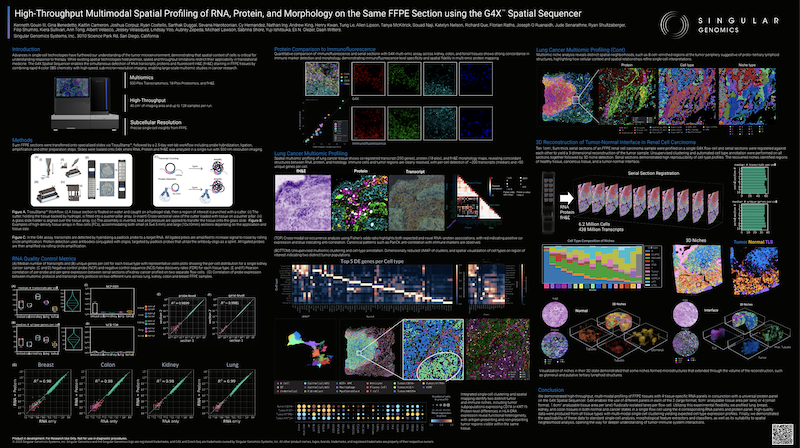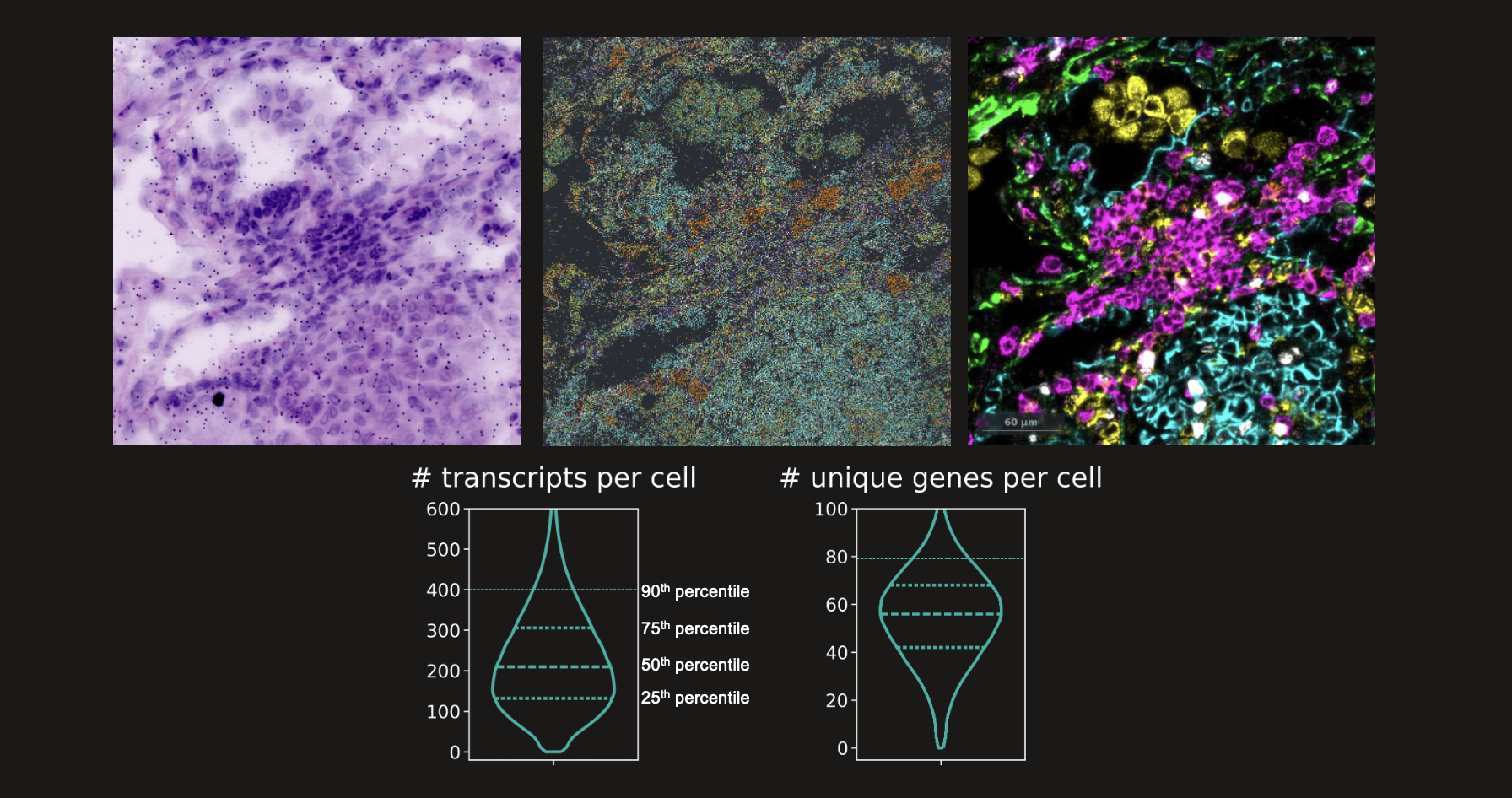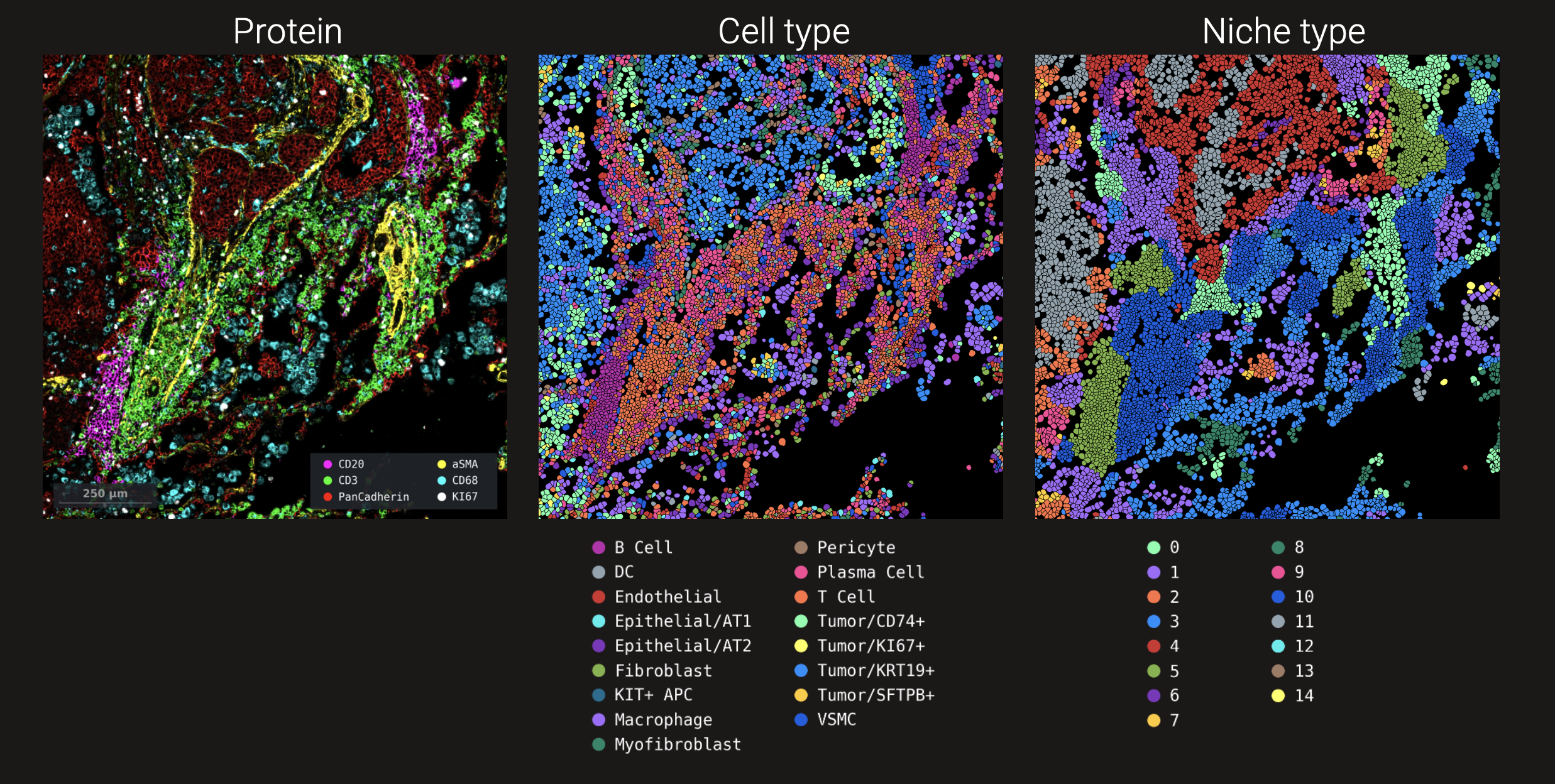Discover G4X™
Delivering Single Cell Spatial Multiomics at Unprecedented Sample Throughput.

High Resolution In Situ Multiomics
G4X enables integrated spatial readouts of RNA, protein, and morphology from the same FFPE tissue section in a single run, delivering subcellular resolution and multimodal insight at scale.
Unprecedented Sample Throughput
~10 times more throughput than other systems and up to 128 samples per run.
The system’s higher throughput is squarely aligned with current needs of the spatial biology field, where increased sample volumes and lower turnaround-times can enable larger studies, adoption into translational or clinical trial settings, as well as higher return-of-investment and reduced costs for researchers and core facilities”.
Dr. Ioannis Vlachos
Director of the Spatial Technologies Unit at Beth Israel Deaconess Medical Center and Associate Professor of Pathology at Harvard Medical School
Director of the Spatial Technologies Unit at Beth Israel Deaconess Medical Center and Associate Professor of Pathology at Harvard Medical School

40 Samples per Run (10x10 mm)

128 Samples per Run (4.5x4.5 mm)
Breaking Cost Barriers
G4X is driving the cost of spatial from thousands of dollars per sample to hundreds resulting in a 5-fold reduction in cost of spatial at scale.
Breaking Cost Barriers
At less than half the cost per sample, G4X empowers researchers to scale into larger, more impactful translational studies.
$240 per Sample
$0.0008 per Single Cell
Exceptional Multiomic Performance in FFPE
Sensitive and specific detection of RNA and Protein at subcellular resolution in the most challenging clinical sample types, powering deep translational insights.
Unlocking 3D Spatial Biology
Highly reproducible results across serial FFPE sections enables researchers to perform multiomic 3D reconstructions like never before.
"The reproducibility, speed, and cost-efficiency allow us to scale 3D spatial analyses in larger retrospective clinical cohorts. Integrating the high-throughput spatial multimodal analysis of samples on G4X with AI can provide us critical insights into disease mechanisms and therapeutic biomarkers, ultimately advancing patient care.”
Dr. Tae Hyun Hwang
Professor of Surgery and Director of Artificial Research at Vanderbilt University Medical Center

3D multiomic reconstruction of 10, 10x10 mm kidney cancer sections with 6.2 million cells and 438 million transcripts. Data generated from a single G4X X2 flow cell.
SITC POster
Explore our Recent Poster
High-Throughput Multimodal Spatial Profiling of RNA, Protein, and Morphology on the Same FFPE Section using the G4X
Kenneth G. et al. Presented at the Society for Immunotherapy of Cancer (SITC) Annual Meeting 2025, National Harbor, MD. Abstract #159.












